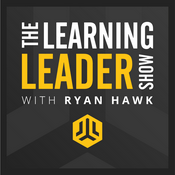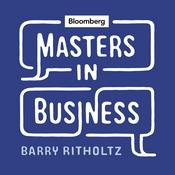249 episodes

Ask Us Anything: Workforce ROI, AI Hallucinations, and the 5 Pillars of World-Class CTE
12/23/2025 | 46 mins.
Watch the episode on Youtube: https://youtu.be/f5gWUVQI0jIMelissa Martin and Matt Kirchner are back to answer your questions, covering everything from university curriculum design, to AI in the classroom, to what employers actually expect when they invest in education.This one moves fast, but it’s focused: how do you build programs that truly prepare students for modern work? How do you keep education from falling behind as technology accelerates? Along the way, Matt and Melissa break down what universities need to change, how to raise the bar in the age of generative AI, why ethics can’t be an afterthought, and how to help HR teams understand the value of credentials and new pathways.Listen to learn:What university programs should teach (in one course) to better prepare grads for modern manufacturing workHow educators can help students identify when AI is wrong and why we need to level-up our homework in the age of AIThe role of ethics in modern CTEThe five components of a world-class, modern advanced manufacturing high school programHow educators can measure program effectiveness and show ROI to industrial partnersWhat HR teams need to understand about changing credentials, degrees, and how to evaluate technical candidates3 Big Takeaways from this Episode:1. have to teach applied industrial skills, not just theory. Matt argues that a four-year program can cover a lot of “cool stuff in the lab,” but it still needs authentic manufacturing equipment and technology so graduates understand what they will actually see in industry. He frames this as an employer expectation problem: even when budgets are tighter at the four-year level, universities still need to build around the same core technologies students will encounter on day one in manufacturing. 2. AI changes the standard for student work and makes ethics a core requirement. Melissa and Matt point out that AI is designed to produce an answer even when it doesn't know (causing a 'hallucination'), which means students must learn to question outputs and verify accuracy instead of treating AI as a sole source of truth. From there, the conversation moves from classroom integrity into broader ethics: what it means to do original work, and how humans should think and behave as AI becomes more capable and more embedded in decision-making. 3. Industry and HR and educators must understand each other's needs to build a successful partnership. Education and Industry both have a responsibility to do their part in a partnership. HR departments must understand the changing landscape of certifications, 3-year degrees and other credentials that students are gaining to demonstrate their technical competency. Likewise, educators must adopt industry practices of tracking metrics to show employer partners the ROI of their investments in the program.Access tons of links & resources on the episode page: https://techedpodcast.com/askusanything-122025/We want to hear from you! Send us a text.Instagram - Facebook - YouTube - TikTok - Twitter - LinkedIn

At the Reagan Ranch: The Life & Legacy of One of America's Greatest Presidents - Scott Walker, President of Young America's Foundation
12/16/2025 | 1h
The clearest way to understand Ronald Reagan’s leadership may not be from a podium, but from a saddle, a woodpile, and a quiet table where he worked through the ideas that shaped an era.In this on-location episode of The TechEd Podcast, host Matt Kirchner sits down with former Wisconsin Governor Scott Walker inside the Reagan Ranch Center, recorded at the same table and microphones Reagan used for his radio addresses. The conversation moves beyond “Reagan the icon” and into Reagan at Rancho del Cielo, the place Ed Meese famously pointed to as the best window into Reagan the man. You’ll hear how the ranch functioned as Reagan’s “open air cathedral,” where he worked the land, cleared brush, and rode horses to clear his mind before returning to the weight of world events. You’ll also hear the personal stories that make Reagan feel three-dimensional again, including the extraordinary bond he formed on horseback with Secret Service agent John Barletta, and the deeply human way Nancy Reagan talked about letting the ranch go.Matt and the Governor also discuss timeless values that define Reagan's legacy. Walker frames Reagan’s optimism as more than tone, because it was paired with firm beliefs, disciplined preparation, and a sustained message about freedom as something fragile that must be defended and passed on. Listen to learn:How Reagan’s time at Rancho del Cielo shaped the way he thought, reset, and ledWhy Reagan’s optimistic “happy warrior” tone worked because it was anchored in uncompromising convictionHow Strategic Defense Initiative (SDI) reframed the Cold War, and how we're seeing that technology in play todayThe short list of speeches that best capture Reagan’s worldview, from “A Time for Choosing” to Brandenburg Gate to Pointe du Hoc3 Big Takeaways from this Episode:1. Reagan’s optimism was anchored in conviction. Walker points to Reagan as a “happy warrior” who appealed to people’s better nature while staying strong in his positions. These timeless values are why he had such strong support, even in a divided government.2. Reagan treated freedom as a generational responsibility, not a permanent condition. Walker highlights Reagan’s repeated warning that freedom is “never more than one generation away from extinction,” and that it must be defended and passed on. He ties that message to Reagan’s Cold War moral clarity, including the belief that if freedom is lost here, “there’s nowhere else in the world left,” and the urgency behind “tear down this wall.” 3. Reagan’s legacy is a case study in the long-term impacts of a great leader. Great American Presidents like Washington, Lincoln and Kennedy are remembered more for their character than their politics. This podcast is an exploration into the character of Ronald Reagan, another great leader who is remembered for his optimism, conviction and humility.Access resources, links and more on the episode page!We want to hear from you! Send us a text.Instagram - Facebook - YouTube - TikTok - Twitter - LinkedIn

Using Values and Customer Experience to Guide an AI and Data-Driven Strategy - Irv and Ryan Blumkin, Chairman and EVP of Nebraska Furniture Mart
12/09/2025 | 54 mins.
In this episode of The TechEd Podcast, host Matt Kirchner sits down with Irv Blumkin, Chairman of Nebraska Furniture Mart (NFM), and Ryan Blumkin, Executive Vice President, to unpack nearly 90 years of retail innovation, from Mrs. B’s pawn-shop beginnings to multi-acre campuses in Omaha, Kansas City, Dallas, and soon Austin. They explore what it’s like to partner with Warren Buffett and Berkshire Hathaway, build massive destination developments, and still obsess over every single SKU and customer interaction. From dynamic pricing and AI-enabled operations to a mind-blowing learning trip through China’s retail and technology ecosystem, Irv and Ryan share how NFM is using data, automation, and emerging tech to deepen their moat, without ever losing sight of values, culture, and long-term thinking. They also talk careers in retail tech, why young “outside-the-box” thinkers matter, and the role of lifelong learning in leading through disruption. Listen to learn:Why Warren Buffett bought Nebraska Furniture Mart on a handshake, and what Irv has learned from decades of dinners and deal-making with himWhy strong values and culture matter more than ever in this tech-driven marketplaceHow NFM uses massive-store footprints, destination partners like Scheels, and even hotel/convention centers to turn shopping into an experienceHow dynamic pricing, digital shelf tags, and nightly web crawls of 70,000+ SKUs keep NFM competitive with Amazon, Costco, Wayfair, and othersWhat Irv and Ryan saw in China's tech companies and how those lessons are shaping NFM’s future3 Big Takeaways from this Episode:1. Timeless values can scale into a $2 billion business. Mrs. B’s simple principles (sell at a great price, tell the truth, and pay your bills) still anchor NFM’s strategy, even as the company builds 1.8 million-square-foot campuses and expands into new markets like Austin. Irv connects those values directly to long-term growth, customer trust, and the family’s partnership with Berkshire Hathaway. 2. Technology is now core infrastructure, not an add-on. NFM’s nightly web crawling, digital price tags, and dynamic pricing systems automatically position them as the best value against online competitors, while complex distribution networks and emerging AI tools optimize inventory and logistics. Ryan frames this as building a “moat” with data, automation, and relentless operational excellence, not just more advertising. 3. Lifelong learning is mandatory for modern leadership. Irv has invested in executive education for decades, and both he and Ryan describe their China trip as “eye opening” in terms of speed, scrappiness, AI adoption, and asset-light business models. They’re already translating those lessons into new e-commerce strategies, warehouse automation concepts, and AI-enabled process improvements back at NFM. Resources in this Episode:Learn more about Nebraska Furniture MartOther resources mentioned:Six Days in China: The Speed, Scale and Innovation Outpacing the U.S. - Podcast episode with Todd WanekMORE LINKS & RESOURCES ON THE EPISODE PAGE: https://techWe want to hear from you! Send us a text.Instagram - Facebook - YouTube - TikTok - Twitter - LinkedIn

Six Days in China: The Speed, Scale and Strategy Outpacing U.S. Innovation - Todd Wanek, CEO of Ashley Furniture
12/02/2025 | 1h 1 mins.
What if you could get a behind the scenes look at China's most innovative tech companies, factories and logistics hubs—seeing how they really run and asking the questions most Americans never get to ask?This week, you do. Matt Kirchner and Todd Wanek, CEO of Ashley Furniture, sit down to debrief the trip they took together to China. In a candid, off-the-cuff conversation, they trade questions and challenge each other’s assumptions as they compare what they saw there with what’s happening in U.S. business, policy, and education.After six days of nonstop plant tours and tech company visits, they debrief what they saw: an engineering-driven society, central planning at massive scale, open-source AI innovation, and humanoid robots that are improving in real time. They contrast that with U.S. politics, policy, education, and workforce development, and lay out the uncomfortable truths and huge opportunities for American manufacturing and technical education.🎥 Watch this episode on YouTubeListen to learn:Why China can approve and build 11 nuclear reactors for the cost of 1 in the U.S. and what that says about speed, scale, and central planningHow an engineering-run government and 1.5 million engineering graduates a year are reshaping China’s economy and innovation pipelineWhy open-source AI in China is accelerating physical AI, humanoid robots, quadrupeds, drones, ASRS systems faster than many U.S. leaders realizeHow e-commerce “clusters” with 70-story towers, shared training, and centralized services are quietly dominating Amazon, Temu, and other marketplacesWhat China’s head start on rare earth minerals, mining education, and mandatory K–12 AI means for U.S. business, policy, and technical education3 Big Takeaways from this Episode:1. China is running its economy like a highly-engineered business, and that's giving them a competitive edge. Matt and Todd break down how central planning, five-year plans, and an engineer-dominated Politburo have turned China into an “engineering society” that can move at staggering speed and scale. They contrast this with U.S. gridlock, pointing to examples like nuclear power, rare earths, and infrastructure to illustrate the gap.2. Open-source AI and clustering are creating a compounding advantage in technology and e-commerce. In China, new code and algorithms are often pushed to open platforms, enabling “once one humanoid learns to walk, they all learn to walk”–style progress. E-commerce and tech clusters in places like Shenzhen centralize training, capital, and services, letting thousands of companies iterate together, scrape competitors in real time, and weaponize interest-based social media marketing.3. The U.S. must treat AI education, automation, and rare earths as “musts,” not “shoulds.” China has made AI mandatory in K–12 while the U.S. still debates chatbots and bans tools in classrooms. Matt and Todd highlight the mismatch between 36,000 lawyers and only ~300 mining/metallurgical engineers graduating each year, and argue for a national shift: rebuild manufacturing clusters, lower the cost of automation, expand applied AI education, and rapidly grow talent in critical technical disciplines.We want to hear from you! Send us a text.Instagram - Facebook - YouTube - TikTok - Twitter - LinkedIn

Applied AI on the Edge Proves There’s More to AI Than ChatGPT - Brian Cavanaugh, CEO of VigilanteX
11/25/2025 | 46 mins.
With artificial intelligence stepping off the laptop and out onto job sites, factory floors, and flight decks, are we preparing students for the AI that sees, senses, and acts in the real world, not just the kind that chats back?Matt Kirchner sits down with Lieutenant General Brian Cavanaugh, USMC (Ret.), CEO of VigilanteX. After decades commanding Marines and integrating emerging tech into national defense, Cavanaugh now leads a company building applied AI platforms at the edge: solar- and Starlink-powered trailers with cameras and compute that monitor sites 24/7 and turn video into real-time safety, security and efficiency intelligence.Together, Matt and Brian unpack what “applied AI” really means across the edge-to-cloud continuum. They discuss AI agents running on the edge, natural language search over video, and systems that close the loop from sensor to decision in seconds. They also explore why simply teaching students to prompt chatbots isn’t enough, and how K-12, CTE, and higher education can catch up to a world where AI is baked into every system, every site, and every mission.Listen to learn:How VigilanteX combines solar power, Starlink, cameras, and edge compute into their tech.The difference between AI at the edge and AI in the cloud, and why latency, bandwidth, and resilience matter for safety-critical environments.How AI agents work at the edge, and why they can work faster and more efficiently than humans (freeing up humans to do more interesting work).Why Cavanaugh believes every student should understand how data moves from sensors to the edge, to the cloud, and back into real-time control.What China’s national push for AI education signals about global competition and how U.S. educators should respond with applied AI in the classroom.➡️ Watch the Full Episode on YouTube3 Big Takeaways from this Episode:1. AI at the edge is becoming a digital teammate. VigilanteX’s platforms use cameras, connectivity, and on-site compute to watch for fall risks, PPE issues, intrusions, and abnormal conditions across construction, manufacturing, logistics, and energy sites. The system flags events in real time, routes the right video to supervisors, and builds a data trail leaders can use to change procedures before accidents happen.2. Edge-to-cloud literacy is a new baseline skill for technical careers. Cavanaugh and Kirchner break down how raw sensor and video data is processed locally, filtered, and then pushed to the cloud for storage, analytics, and dashboards. Understanding where computation lives, what data moves, and how AI agents plug into that pipeline prepares students for roles in automation, OT/IT, robotics, and cyber-physical systems in any industry.3. We need to teach applied AI, not just chatbots. While large language models are powerful, the episode shows how AI is part of the edge-to-cloud continuum. Giving students hands-on experience with autonomous systems, computer vision, and industrial data flows helps them see AI as something they can design, deploy, and govern rather than a black box that only lives in a browser.Find links & more resources on the episode page! We want to hear from you! Send us a text.Instagram - Facebook - YouTube - TikTok - Twitter - LinkedIn
More Business podcasts
Trending Business podcasts
About The TechEd Podcast
Listen to The TechEd Podcast, REAL AF with Andy Frisella and many other podcasts from around the world with the radio.net app

Get the free radio.net app
- Stations and podcasts to bookmark
- Stream via Wi-Fi or Bluetooth
- Supports Carplay & Android Auto
- Many other app features
Get the free radio.net app
- Stations and podcasts to bookmark
- Stream via Wi-Fi or Bluetooth
- Supports Carplay & Android Auto
- Many other app features


The TechEd Podcast
download the app,
start listening.






































